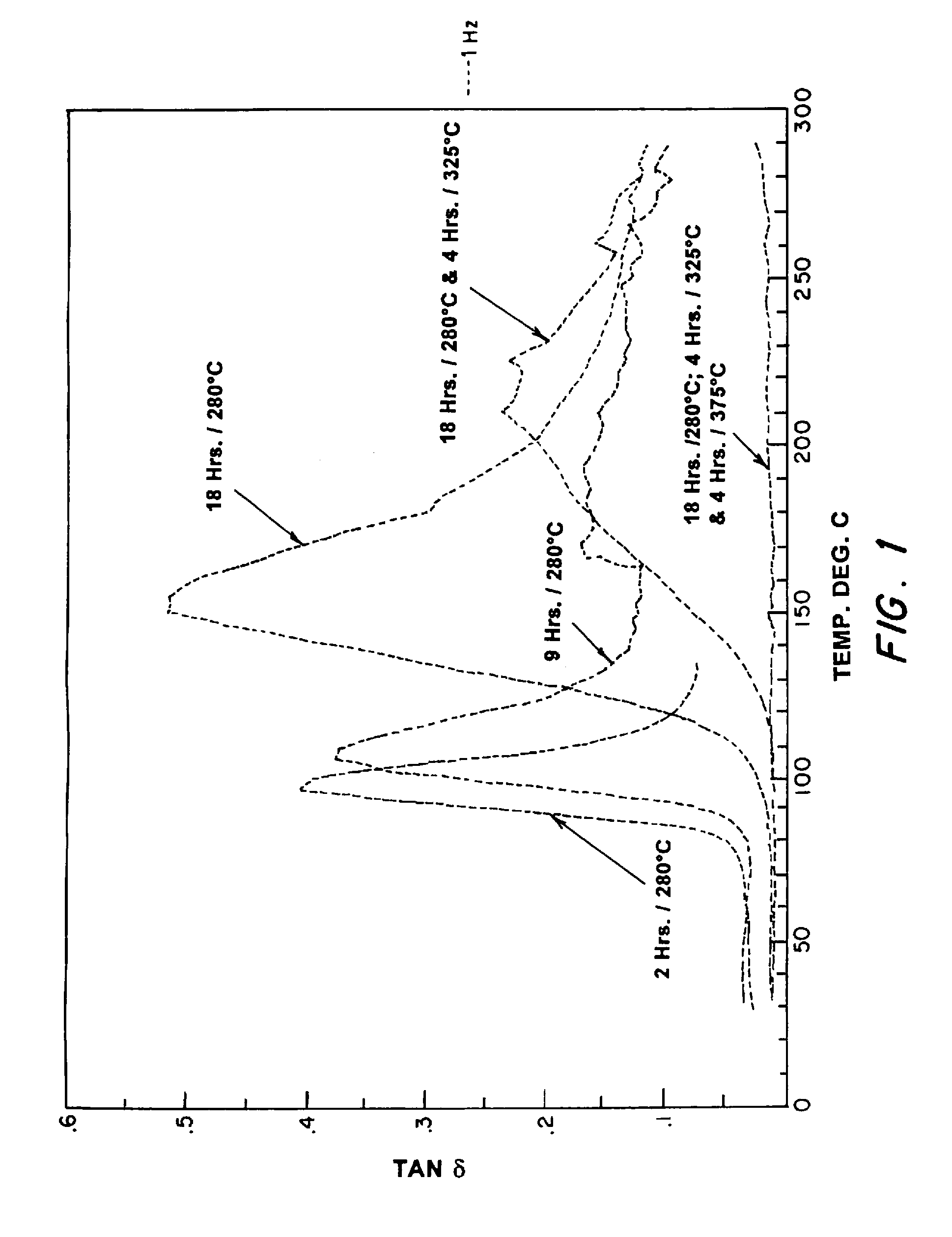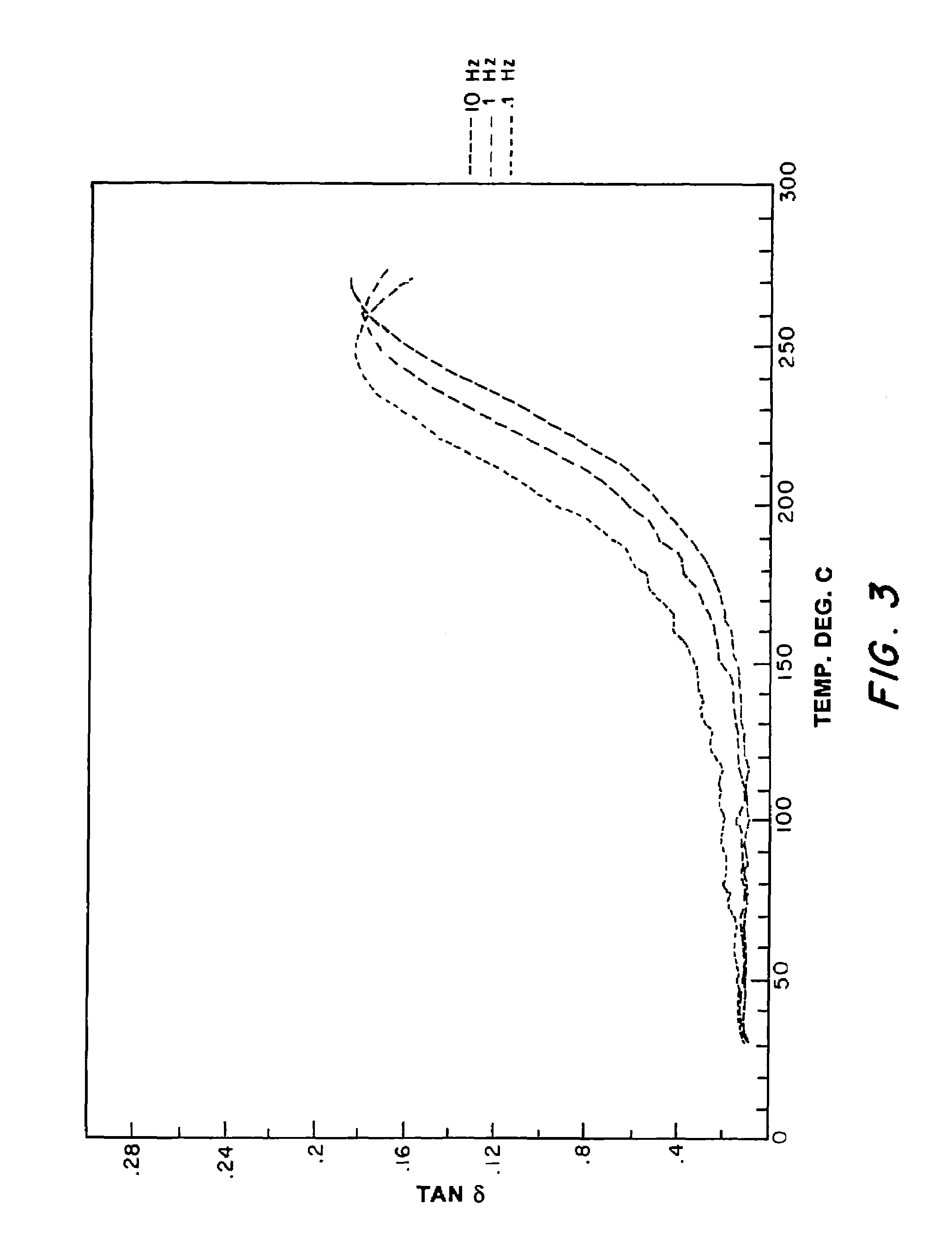Porous metal/organic polymeric composites
- Summary
- Abstract
- Description
- Claims
- Application Information
AI Technical Summary
Benefits of technology
Problems solved by technology
Method used
Image
Examples
example 1
Preparation of Phthalonitrile Prepolymer
[0041]Phthalonitrile monomer, 4,4′-bis(3,4-dicyanophenoxy)biphenyl, was purchased from Daychem Laboratories. 10 g of the monomer was placed in an aluminum planchet and melted on a hot plate at 250° C. (monomer melts around 235° C.). The monomer melt was degassed for about 2 h to eliminate trace amounts of solvent present. The phthalonitrile prepolymer was synthesized by adding 0.15-0.168 g (1.5-1.68 wt %) of 1,3-bis(3-aminophenoxy)benzene, obtained from National Starch Corporation, to the monomer melt. The melt was stirred for 15 min. and was used for fabrication of phthalonitrile / metal foam composite specimens.
example 2
Fabrication of Phthalonitrile / Aluminum Foam Composite
[0042]An aluminum mold, 2×0.6″×0.2″, coated with a teflon mold release agent was used for fabrication of composite specimens. Two aluminum foam strips (1″×0.5″×0.185″, density 6-8% of the solid material, pore size—40 pores per inch (ppi)) separated by a teflon film, were placed in the mold and heated to 250° C. Approximately 2-3 g of the prepolymer melt synthesized as described above in Example 1 with 1.68 wt % curing additive was poured over the metal foam and degassed for about 15 min. with periodic venting to ensure a good flow of the resin throughout the metal foam. The mold was then heated in an air circulating oven for 9 h at 280° C. and cooled back to room temperature over a 3 h span. The composite samples made with this prepolymer showed an incomplete penetration of the resin into the metal foam. Therefore, subsequent composite fabrications involved a slower curing prepolymer made with 1.5% curing additive. The prepolymer ...
example 3
Fabrication of Phthalonitrile / Aluminum Foam Composite
[0043]An aluminum mold, 2″×0.6″×0.2″, coated with a teflon mold release agent was used for fabrication of composite specimens. Two aluminum foam strips (1×0.5″×0.185″, density 6-8% of the solid material, pore size—40 ppi) separated by a teflon film, were placed in the mold and heated to 250° C. Approximately 2-3 g of the prepolymer melt synthesized with 1.5 wt % curing additive was poured over the metal foam and degassed for about 15 min. with periodic venting to ensure a good flow of the resin throughout the metal foam. The mold was then heated in an air circulating oven for 9 h at 280° C. and cooled back to room temperature over a 3 h span. The composite samples made with this prepolymer showed a complete penetration of the resin through the metal foam. The mechanical and damping properties of the phthalonitrile / aluminum composite samples were evaluated after heat treatment at the following conditions: (A) 9 h at 280° C. (B) 18 ...
PUM
| Property | Measurement | Unit |
|---|---|---|
| Thickness | aaaaa | aaaaa |
| Diameter | aaaaa | aaaaa |
| Size | aaaaa | aaaaa |
Abstract
Description
Claims
Application Information
 Login to View More
Login to View More - R&D
- Intellectual Property
- Life Sciences
- Materials
- Tech Scout
- Unparalleled Data Quality
- Higher Quality Content
- 60% Fewer Hallucinations
Browse by: Latest US Patents, China's latest patents, Technical Efficacy Thesaurus, Application Domain, Technology Topic, Popular Technical Reports.
© 2025 PatSnap. All rights reserved.Legal|Privacy policy|Modern Slavery Act Transparency Statement|Sitemap|About US| Contact US: help@patsnap.com



